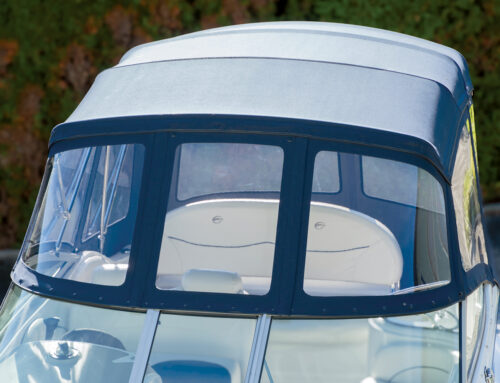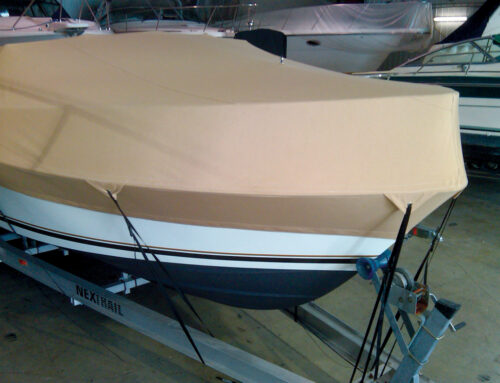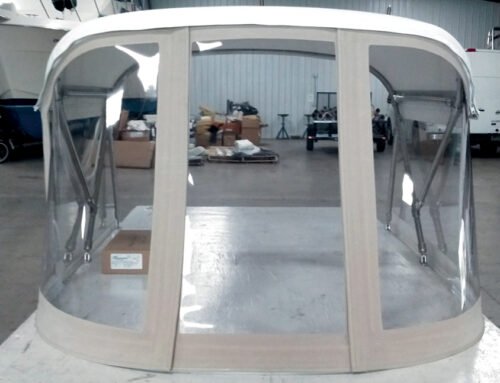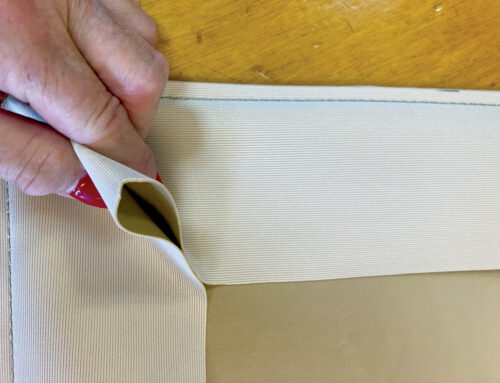Choosing the right fabrics
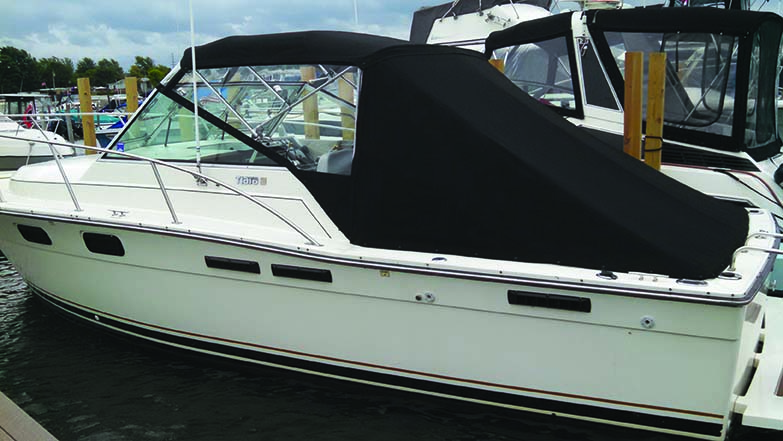
There are many suppliers of fabrics in the marine industry. Upon researching just one of our suppliers, I discovered more than 4,000 fabrics, spanning 11 application categories, and each fabric was uniquely created for both the marine and other crossover industries. To cover even a portion of them would require a volume of publications. For the purposes of this article, we will focus on marine-related products, which include boat covers and enclosures, upholstery exterior/interior, and shade systems for commercial/residential, to name just a few “canvas shop” product categories.
Primary factors affecting choice
The right choice in fabrics is generally dictated by factors such as natural weather conditions, longevity, cost, and current or past trends in your particular geographic location. A fabric that is perfect in Minnesota may not be perfect in Florida for obvious temperature and humidity reasons. A fabric purchased at a retail home-sewing store may be perfect for your living room but will likely not perform well in a boating environment.
I am quite certain that, should I mention a specific brand of fabric as being a top choice, it will ignite a ferocious dispute within the industry. The debate over one fabric versus another can be solved this way: “Choose the best fabric for the specific application for your particular market.”
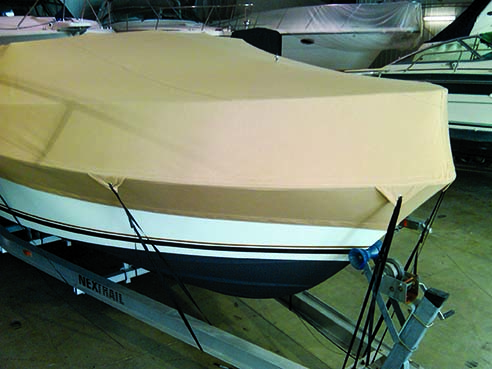
Woven vs. coated
When a client inquires about a project, a fabricator will quickly determine whether the project will require a woven or a coated fabric, which are the two general categories of marine fabrics. Woven products are best used in hot temperatures and high humidity because air can pass through the fabric. This helps to prevent mold and mildew from developing on the underside, while keeping the weather elements outside of the boat. Coated fabrics do not breathe but are superior for winter covers because they are waterproof and can shed snow and ice quite well. Coated products are often easy to clean with no special techniques required.
When to use acrylics
Like most canvas shops, despite the thousands of fabrics available in the marketplace, we’ve narrowed down the choices to a half dozen go-to fabrics. For summertime use, the first fabric I consider is a woven fabric made from acrylic fibers that are solution dyed. Acrylic fibers are impervious to sunlight and do not require a coating to protect the thread that is used to weave the bolts of fabric. Solution-dyed fabric means that the fibers were dyed the color of choice before they were process-spun into a thread. Acrylic fabrics have been on the market since the mid-1960s and have proven their durability over the test of time, with many offering up to a 10-year warranty. Three popular examples of acrylics are Sunbrella®, Tempotest® and Outdura®.
Keep in mind that most acrylic fabrics are water resistant, not waterproof, and each brand uses a proprietary chemical for water repellency. Most acrylic fabrics on the market are in the range of 9.0 to 9.50 ounces per linear yard and are quite suitable for marine applications such as bimini tops, mooring covers and enclosure panels. Acrylics typically can be used with either side facing up and have a degree of stretch along the warp (lengthwise threads). However, acrylics are not suitable for snow loads or high-speed trailering.
When PVC is the right choice
For winter storage or heavy-equipment coverings, a PVC-coated polyester (polymeric) product is my go-to fabric. Typically available in heavy weights of 9 to 11 ounces per linear yard, these single- or double-sided coated fabrics offer waterproof solutions. A great example is HarborTime® Edge. Another popular polymeric fabric among the larger boats in the yacht category is Stamoid because of its ability to be cleaned. However, these examples of PVC-coated products must be vented, as mold and mildew will grow on the underside if air does not circulate properly. These products typically begin with a polyester mesh base. However, a waterproof version of an acrylic fabric, known as SeaMark®, is created by applying a PVC coating to the fabric’s underside.
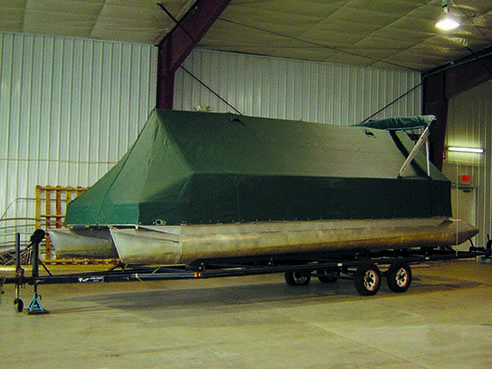
Laminates, polyesters and new technology
Laminates, such as Weblon Regatta®, are made through a PVC-coated laminate process. Although they are durable and waterproof, constant folding of the fabric may create pinholes. Laminates are best used on stationary framework that does not get removed.
There is a demand for lightweight fabrics in many markets. These are perhaps used most often as dustcovers or to deter bird droppings on the deck. Solution-dyed polyester products, such as Hydrofend® or Sur Last®, offer breathability and reduced bulk. Just remember that lightweight materials usually do not offer the longevity seen with heavier fabrics.
Specialty fabrics and new technology are progressing. We are seeing fabrics made of silicone, fabrics that light up with the flip of a switch and technology that reduces heat. Fabric is an ever-changing industry thanks to modern chemicals. As one manufacturer’s rep told me, “We are no longer in the fabric business. We are in the chemistry business.”
Keeping price in perspective
I cringe when I hear fabricators say, “I use this brand of fabric because it’s cheaper than the other brand,” and the two fabrics are totally different. They may be comparing an acrylic fabric to a polyester product, or a woven fabric to a coated product. I also understand why some boat manufacturers will purchase a lower-priced fabric. After all, they are in the business of making boats, not of selling high-end canvas products. To keep costs down, they may choose a low-cost fabric over a fabric that would have performed better over time. In many markets, the fabric is not subjected to both hot and cold temperatures all within the same season. Therefore, the choice of fabric is different. A less expensive fabric does not mean that it is inferior. It simply means that it may be intended for a different use.
When custom fabricators choose the wrong fabric simply because it is cheaper to buy, they are doing a disservice to themselves and to their customers. When the fabric fails prematurely or performs poorly, the canvas shop’s reputation will soon go down with the ship. From a dollar and cents standpoint, it makes no sense to buy a fabric that will underperform. Let me give you an example. Let’s say that Brand A is not the best choice of fabric, yet it retails for $10 less per yard than Brand B. The project requires 12 yards of fabric. The difference to the consumer is $120. If the project total is $1,500 using the lesser-performing fabric, wouldn’t the customer have willingly paid $1,620 for the best fabric, if given the choice?
Since our first day in business 20 years ago, we have offered the right fabric to accomplish the purpose of the project, regardless of the cost. Some of the fabrics that we use will retail for as much as $134 per yard. Thank goodness we chose this philosophy, because our reputation of building high-end, quality products has served us well. With thoughtful fabric choices and skilled construction processes, you too can have the same success in your shop!
Russ Griffin is co-owner and instructor of Northcoast Marine Specialties LLC. Northcoast operates a canvas fabrication training school in Port Clinton, Ohio.
 TEXTILES.ORG
TEXTILES.ORG 


